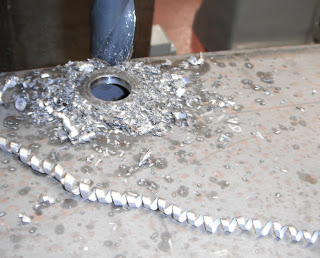Painting the inside of the tank
It's not clear whether or not the inside of the tank should be painted. Some old hands say that it's not a concern. Others say that it is. I decided not to paint the inside of mine.
Mesh Filter on the Tank Intake
The design calls for a mesh strainer on the tank intake. This guy suggests that such strainers can be more harm than good. Most contaminants enter the system through hydraulic cylinders and pumps and such. It seems like those would be removed by the filter on the fluid return.
So it seems like the intake won't be removing much material. However, it will require the pump to pull harder to get a supply of fluid. This higher pressure lowers performance, and can cause cavitation (like in Hunt for the Red October). Finally, the tank is a fair bit more complex to build, because the current intake filter doesn't fit into the tank correctly.
Should this part be omitted entirely?
Baffling Design
Design for Maintenance
Some webpages suggest that hydraulic tanks have a drain plug on the bottom to make flushing out sediment easy. Should we put in one of these? Another suggestion is to have quick disconnects on the intake and return to make it easier to service the pump and such.
I think we can forego the disconnects because the tank is relatively small, and therefore easy to drain.
Design for Convenience
It might be helpful to have a window to see the level of the tank fluid. It might be helpful to have a thermometer to measure the operating temperature of the fluid. These seem like frills though-- how hard/expensive would they be to add?
Resources for Tank Design
General Tank Design - an advocate for painted interior, information on baffles
Some odds and ends for making tanks - Ever consider using a converted Keg (Aluminum, or Stainless Steel)?
Claim that Hydraulic intake filter can do harm.
Experienced Folk talking about practical tank design.
* Open & Closed questions updated












